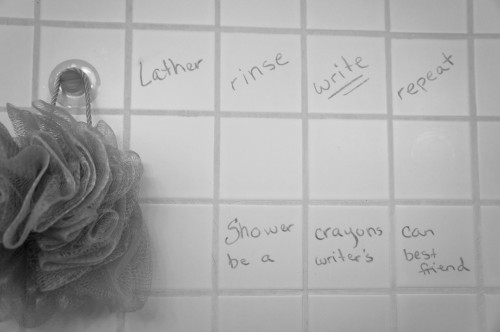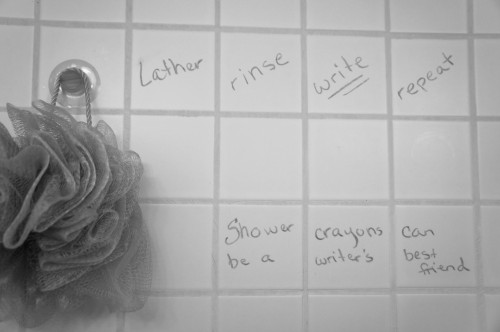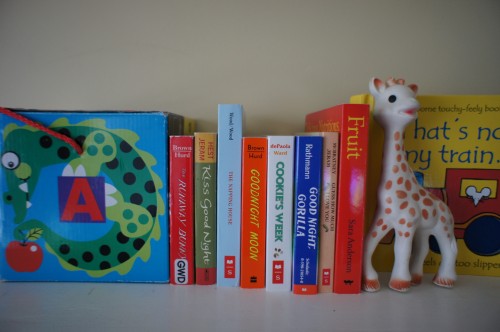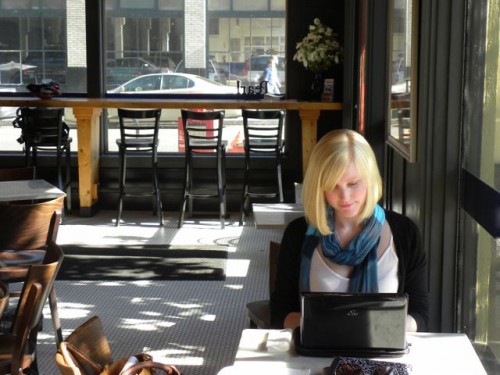

If you’re going to write that novel (or memoir, or screenplay, or front-page feature), you have to write. Pen to paper, keystrokes to page. Those first words are essential, but they won’t matter if you don’t keep the pattern going.
Last month I gave you four ways to keep your 2011 writing goals; today I’ll focus in-depth on one more: the importance of scheduling writing appointments with yourself. It’s easier said than done, so here are some tips for making it happen:
Schedule an appointment with yourself like you would a hair cut or a doctor visit. Then make sure to organize your time so you won’t be late. It’s easy to let this slide because the only appointment you have is with yourself. If you’re late to an appointment with yourself, it doesn’t really matter, does it? Well, yes it does. It might mean the difference between publishing your breakout novel or never even finishing your first draft. Do whatever you have to do in order to make this happen. Block it off on your calendar in a special color, set a reminder alarm to go off, pretend you’re a famous author and you have a once-in-a-lifetime meeting with yourself, whatever. Just make sure it happens.
Figure out a calendar system that works for you. If you’re going to make appointments, you need a system to keep track of them, whether it’s a planner, a calendar on the wall, or a reminder that pops up on your phone. In my quest for my perfect time management system, I’ve settled on a combination of a tiny purse-sized planner, a weekly printout of a chart I’ve created to help establish day-to-day routines, and the calendar on my computer. It may seem pretty crude and archaic with all the technology that abounds, but it works for me. I’ve discovered that keeping information solely on the computer equals out of sight, out of mind. So having a tangible thing to refer to helps.
Prepare your writing space in advance. Sometimes having to clear a space for writing can be a barrier to entry. Whether your desk is in disarray or you have to use the dinner table as a desk, make sure it’s ready for you to write before your appointment starts. If your appointment is first thing in the morning, clear the space before you go to be the night before. If it’s after dinner, then collect all the materials you need–laptop, notebook, writing book, headphones, etc.–in a spot near the table beforehand so you’re ready to swap the dishes with your writing materials immediately.
Treat yourself to some hospitality. If you were entertaining a famous author (see #1), you’d make him or her feel welcome and at home. You might have a pot of tea ready and some cookies, or a pitcher of water with lemon wedges accompanied by some little sandwiches. You’d make sure your surroundings were orderly. You might have a scented candle burning, or an arrangement of fresh flowers. What can you do to make yourself feel at home in your writing spot? You’re going to be here a while. Make it comfortable so you’ll want to linger.
Establish rules with your family. If you’re writing at home and tend to get distracted by your spouse, roommate, or children, remember, it’s their home too. No matter how big or small your space may be, you can find solutions. It may take some creative thinking, but in the end it will be worth it. Maybe you designate a room as your writing space during certain hours, and keep a sign-up sheet on the door so they know it’s your spot for a certain amount of time (if that’s the case, a friendly do-not-disturb sign might also do wonders).
If you don’t have an extra room in which to write, is there a way you can cordon off a part of the living room as your writing spot, maybe with a screen or clever arrangement of furniture and noise-blocking headphones? If that’s the case, and the TV is in the same room, you may have to negotiate when it’s TV time and when it’s writing time. Tip: try working your writing time around when you know other members of your household will want to watch the TV; your flexibility could pay off when you need it.
And, of course, there will be times you just need to get out of the house. Maybe everyone is home on a Saturday when you’ve scheduled a writing time, and they’re having so much fun that you can’t help but join them. Go to a nearby coffee shop. Or if the weather is nice bring your notebook to the park or out to the garden.
Reward yourself. Rewards are always a good incentive. Tell yourself that if you keep all your writing appointments in a set amount of time–a week if you want to start small, or a month if you’re ambitious–you’ll treat yourself to something special, such as a new journal, a writing session at a favorite Destination Inspiration location that’s usually too far to travel for your regular writing times, a relaxing bath with a glass of wine and a good book, or whatever else that feels like a treat to you.
What are your secrets for keeping your writing appointments or writing goals?



















